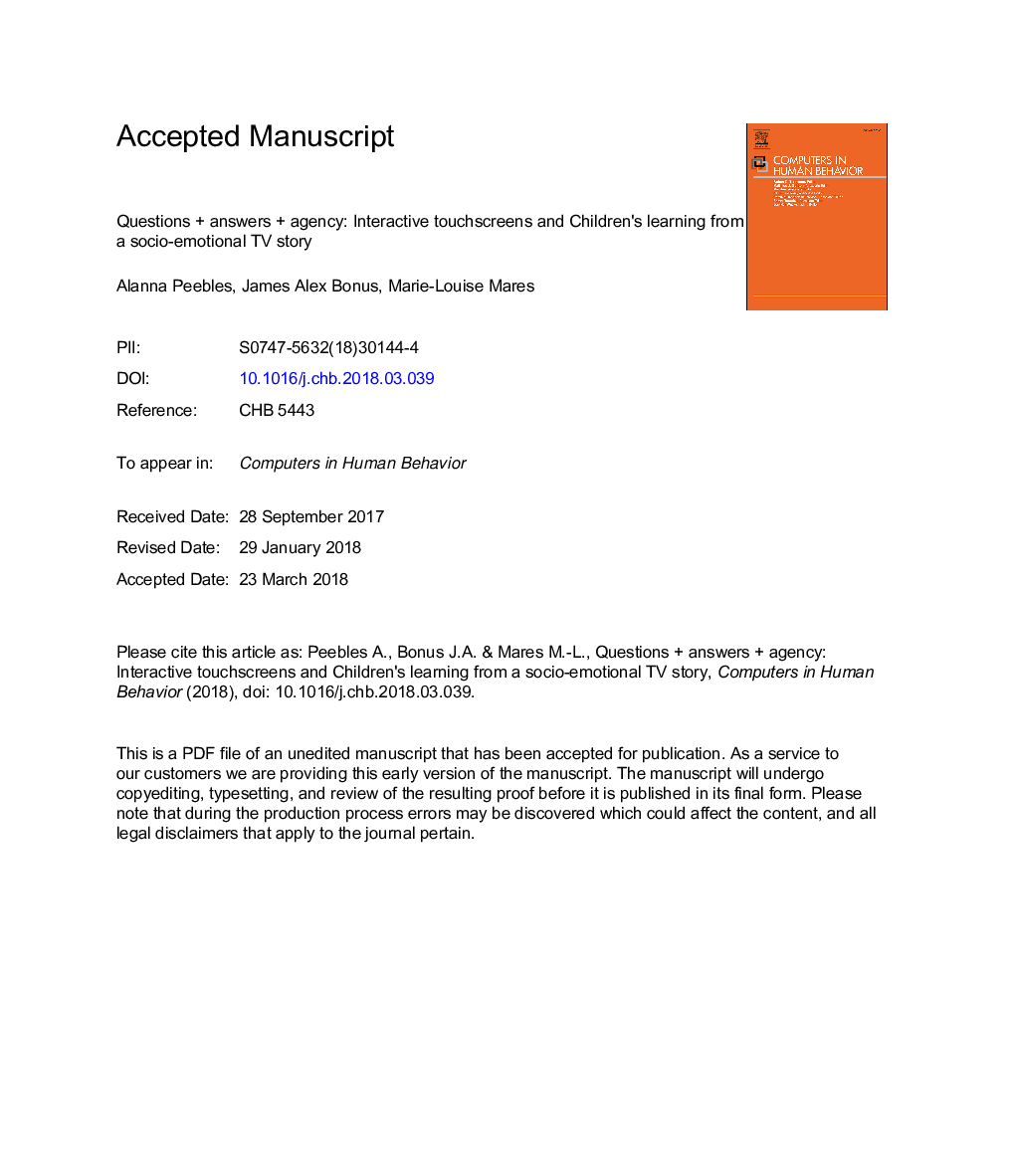| Article ID | Journal | Published Year | Pages | File Type |
|---|---|---|---|---|
| 6835941 | Computers in Human Behavior | 2018 | 41 Pages |
Abstract
Media interactivity has been characterized by three elements: turn-taking, responsiveness, and agency. This experiment examined the effects of successively adding each component to a socio-emotional TV narrative for a preschool-aged audience. Ninety-seven 3- to 5-year-olds were randomly assigned to watch one of four versions of an animated show teaching the virtues of honesty (with 0-3 interactivity components) or to watch a control episode. Relative to non-interactive viewing, full interactivity (but not partial interactivity) improved children's recognition and labeling of characters' emotions and lies/truths, and it indirectly enhanced their comprehension of the narrative's moral lesson. However, interactivity only minimally improved children's ability to transfer episode-specific learning of socio-emotional content to novel and more realistic contexts.
Related Topics
Physical Sciences and Engineering
Computer Science
Computer Science Applications
Authors
Alanna Peebles, James Alex Bonus, Marie-Louise Mares,
